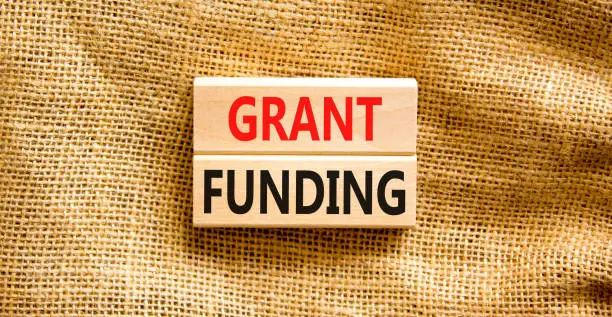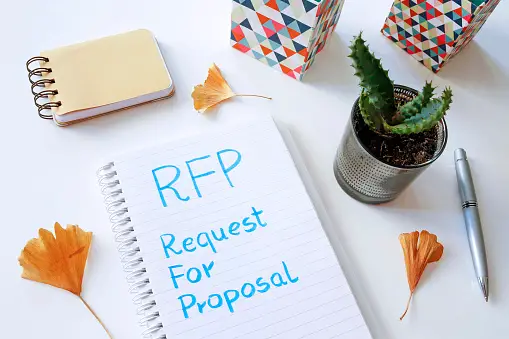Preservation grants are financial awards given to support the conservation and restoration of cultural heritage, historical landmarks, natural environments, and other significant assets that are of importance to a community, country, or the world at large.
These grants are essential in safeguarding the integrity and accessibility of cultural and natural heritage for future generations. Here’s a more detailed look at various aspects of preservation grants:
Purpose and Importance
- Cultural Heritage Conservation: Preservation grants help in maintaining and restoring historic buildings, monuments, artworks, and archives. This ensures that future generations have access to their cultural heritage, promoting a sense of identity and continuity.
- Environmental Preservation: Some grants focus on conserving natural landscapes, ecosystems, and biodiversity. This includes projects aimed at protecting endangered species, restoring natural habitats, and maintaining the health of ecosystems.
- Educational and Research Opportunities: By preserving historical and natural sites, grants facilitate educational and research opportunities, allowing scholars, students, and the general public to learn from preserved sites and materials.
- Community Engagement and Development: Preservation efforts often involve local communities, fostering a sense of pride and ownership, and sometimes creating jobs and promoting tourism.
Sources of Preservation Grants
- Government Agencies: Many countries have governmental departments dedicated to the preservation of cultural and natural heritage. These agencies often offer grants to organizations and sometimes individuals undertaking preservation projects.
- Private Foundations and Trusts: Non-governmental organizations, private foundations, and trusts also provide funding for preservation efforts. These entities may focus on specific types of projects, such as architectural conservation, art restoration, or environmental protection.
- International Organizations: Bodies like UNESCO (United Nations Educational, Scientific and Cultural Organization) offer grants for projects of significant cultural or natural importance to humanity, often with an emphasis on World Heritage Sites.
Comprehensive list of Foundations Awarding Preservation Grants
Cultural and Historic Preservation
- The National Trust for Historic Preservation
- Focus: Historic buildings and sites in the United States.
- About: Provides grants through various programs, such as the Preservation Fund, to support planning and educational projects for historic sites. They also offer specialized grants for African American cultural heritage sites and emergency funds for sites at risk.
- The Getty Foundation
- Focus: Art conservation worldwide.
- About: Supports conservation of artworks, architecture, and cultural heritage through grants for research, conservation, and training professionals in the field. Its initiatives aim to maintain the integrity and accessibility of significant cultural artifacts.
- The Graham Foundation
- Focus: Architecture and the built environment.
- About: Offers grants to projects that explore innovative design ideas and narratives that engage with architecture and its role in the arts, culture, and society. They support both individuals and organizations.
- Historic Environment Scotland
- Focus: Scotland’s historic environment.
- About: Offers funding for projects that promote the conservation, understanding, and accessibility of Scotland’s historic environment, including grants for repairing historic buildings and engaging communities with their local heritage.
- The Heritage Lottery Fund (National Lottery Heritage Fund)
- Focus: UK heritage projects.
- About: Provides grants to a wide range of projects that make a lasting difference for heritage, people, and communities in the UK. Projects can range from restoring natural landscapes to preserving historic buildings and cultural traditions.
- The Foundation for Cultural Heritage Preservation
- Focus: Global cultural heritage.
- About: Supports projects that preserve cultural heritage, including artifacts, languages, and traditional practices. They focus on endangered heritage, aiming to protect it for educational and cultural continuity.
Environmental Conservation
- The Nature Conservancy
- Focus: Global environmental preservation.
- About: Works in various domains, including water conservation, sustainable land management, and habitat restoration. While primarily an operational NGO, it also provides funding for conservation projects through partnerships and specific programs.
- The Conservation Fund
- Focus: Land and water conservation in the United States.
- About: Offers financial support for environmental protection and sustainable practices. It focuses on creating solutions that make environmental and economic sense, supporting projects ranging from habitat restoration to the development of green infrastructure.
- The David and Lucile Packard Foundation
- Focus: Conservation and science, including ocean and land preservation.
- About: Funds initiatives aimed at conserving and restoring the earth’s natural systems and biodiversity. The foundation supports projects that address climate change and sustainable resource use.
- The Gordon and Betty Moore Foundation
- Focus: Environmental conservation and science.
- About: Provides significant funding for environmental conservation efforts, with a focus on preserving critical ecosystems, promoting sustainable fisheries, and conserving wild salmon habitats.
Art and Museum Conservation
- The Andrew W. Mellon Foundation
- Focus: Arts and humanities, including art conservation.
- About: Provides grants for art conservation projects at museums, libraries, and archives. Their support includes funding for conservation treatments, research, and the development of conservation strategies and technologies.
- The Kress Foundation
- Focus: European art, with a special emphasis on art conservation.
- About: Supports the field of art conservation through grants for research, training, and the dissemination of knowledge. They offer funding for conservation projects involving European artworks and historical artifacts.
- The Samuel H. Kress Foundation
- Focus: European art conservation, particularly works from antiquity to the early 19th century.
- About: Supports scholarly projects that enhance the understanding and preservation of European art, with a strong emphasis on conservation training and research.
- The Terra Foundation for American Art
- Focus: American art preservation.
- About: Offers grants and fellowships for the conservation of American art, supporting projects that preserve, study, and present American art to broader audiences.
Specialized Preservation
- The World Monuments Fund
- Focus: Endangered cultural heritage sites worldwide.
- About: Dedicated to saving the world’s most treasured places. The fund provides financial and technical support for the preservation of historic architecture, landscapes, and archaeological sites under threat.
- The Global Heritage Fund
- Focus: Archaeological sites and historic landscapes in developing countries.
- About: Works to protect, preserve, and sustain the most significant and endangered cultural heritage sites in developing regions. Their approach combines conservation with community development and strategic partnerships.
- The CyArk Foundation
- Focus: Digital preservation of cultural heritage sites.
- About: Uses digital technologies to create detailed 3D models of world heritage sites at risk. Their work helps in the preservation and digital documentation of these sites for education and virtual accessibility.
- The Prince Claus Fund
- Focus: Cultural heritage in areas of crisis.
- About: Provides support for cultural heritage preservation in places affected by conflict or disaster. The fund emphasizes the importance of culture as a basic need, supporting projects that ensure its survival and resilience.
Additional Foundations for Diverse Preservation Efforts
- The Rockefeller Foundation
- Focus: Global social issues, including heritage preservation.
- About: Supports initiatives that promote resilience and sustainable development, including projects that preserve cultural heritage and historical sites as part of broader community development efforts.
- Ford Foundation
- Focus: Social justice, including cultural heritage preservation.
- About: Funds a wide range of initiatives worldwide, with some focus on preserving cultural heritage as a means to foster diversity, equity, and inclusion.
- The Pew Charitable Trusts
- Focus: Public policy, including cultural and environmental preservation.
- About: Provides grants for projects that range from protecting ocean environments to conserving historical sites, aiming to solve today’s most challenging problems.
- Fauna & Flora International
- Focus: Global biodiversity conservation.
- About: Supports projects that conserve threatened species and ecosystems worldwide, including efforts to manage protected areas and landscapes.
- The Global Fund for Forgotten People
- Focus: Humanitarian aid, including preservation of cultural traditions.
- About: Offers grants that help preserve the dignity and traditions of marginalized communities, including support for cultural preservation among indigenous peoples.
- The European Cultural Foundation
- Focus: Strengthening European culture.
- About: Supports projects that contribute to a united and open Europe, including initiatives that preserve and promote European cultural heritage.




